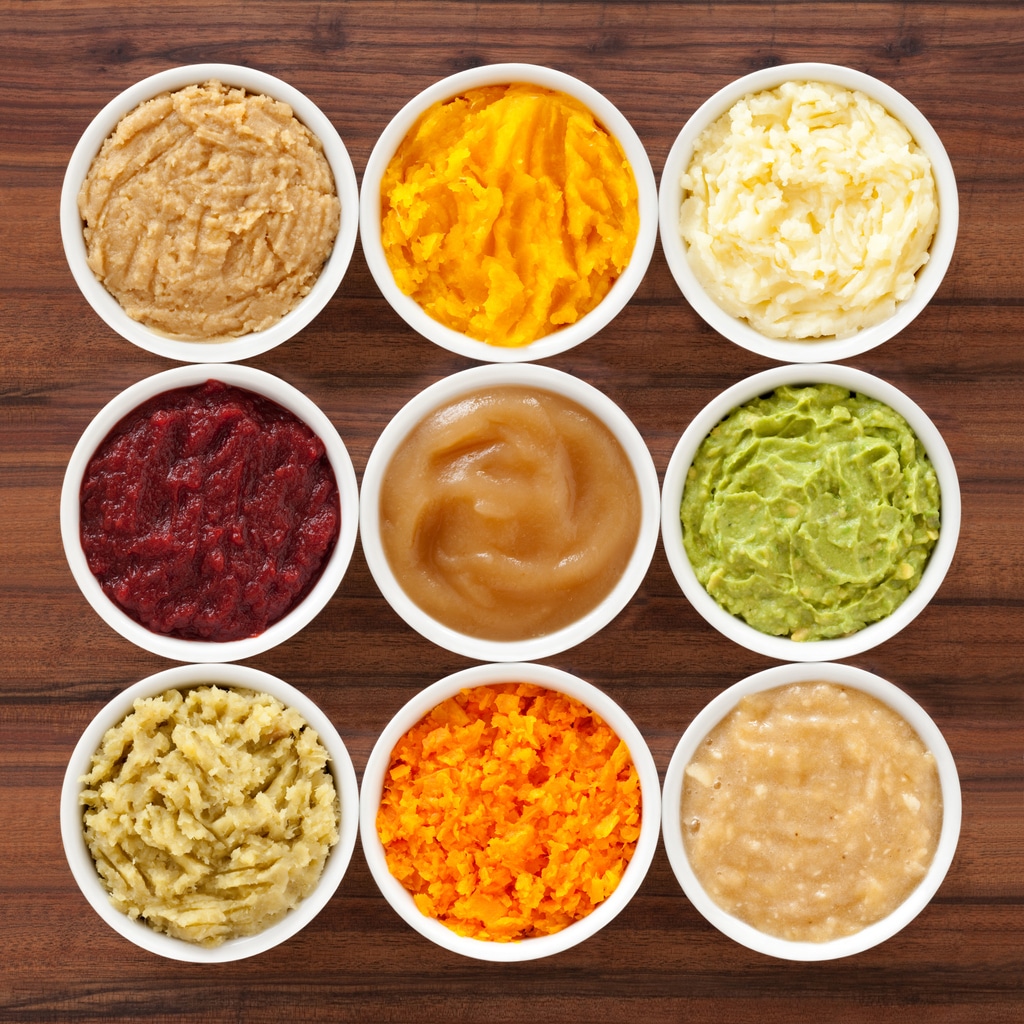Finding the right foods to eat when you’re struggling with a swallowing disorder (dysphagia) can be challenging, especially when all your favorite foods are suddenly out of the equation. The good news is that there are many delicious dysphagia-friendly options to choose from. Let’s take a look at some foods to choose and a few to avoid during your swallowing disorder treatment process.
Foods To Avoid

In general, you want to avoid large, hard or dry foods when dealing with dysphagia. A few common foods to avoid include:
- Crispy fries or potatoes
- Dry wheat or grain products like cereal/cereal bars, crusty bread, pizza crust, etc.
- Raw vegetables like broccoli, cauliflower, carrots, etc.
- Fruits or vegetables with tough skins like apples, grapes, tomatoes, etc.
- Pineapple
- Seeded fruits like blackberries and raspberries
- Tough greens like kale or cabbage that are not finely shredded or cooked
- Dried fruit
- Nut butters or jams with larger fruit pieces
- Nuts and seeds
- Bacon
- Beef jerky
- Hamburgers or processed luncheon meats
- Chips, pretzels, etc.
- Hard or chewy candy
Beyond this list, use your best judgment when deciding whether a food or drink will be difficult to swallow.
Foods To Choose
While the list of foods to avoid may seem long, there are so many great foods you can still enjoy. Run to Pontiac Street Market for softer foods that are easier to chew and move around the mouth, including but not limited to:
- Thin, nectar or honey-thickened liquids
- Pancakes or French toast with plenty of syrup
- Oatmeal or cooked cereal
- Fruit smoothies
- Mashed potatoes (or any well-cooked potatoes without crispy skin)
- Milk-softened cereals
- Well-cooked pasta with a lot of sauce
- Soft-cooked eggs
- Tofu
- Soft and slightly mashed beans
- Finely ground meats, poultry or fish in a gravy or sauce
- Ripe bananas
- Canned fruits without seeds or skin, like peeled grapes, peaches, etc.
- Cooked, diced vegetables
- Soft desserts like pudding, custard, jello, ice cream and soft-baked pies without hard crusts
- Gravies, sauces, jams and syrups without chunks or seeds
How Should I Prepare My Food?
When preparing your food, aim for small pieces—diced, shredded, minced or ground—and make sure it’s well-cooked but not crispy. Over time, you’ll get to know your dysphagia and what foods you can and can’t swallow easily.
Diet is just one aspect of managing a swallowing disorder. For a comprehensive treatment plan tailored to your needs, contact Ear, Nose & Throat Associates to schedule an appointment with one of our specialists.